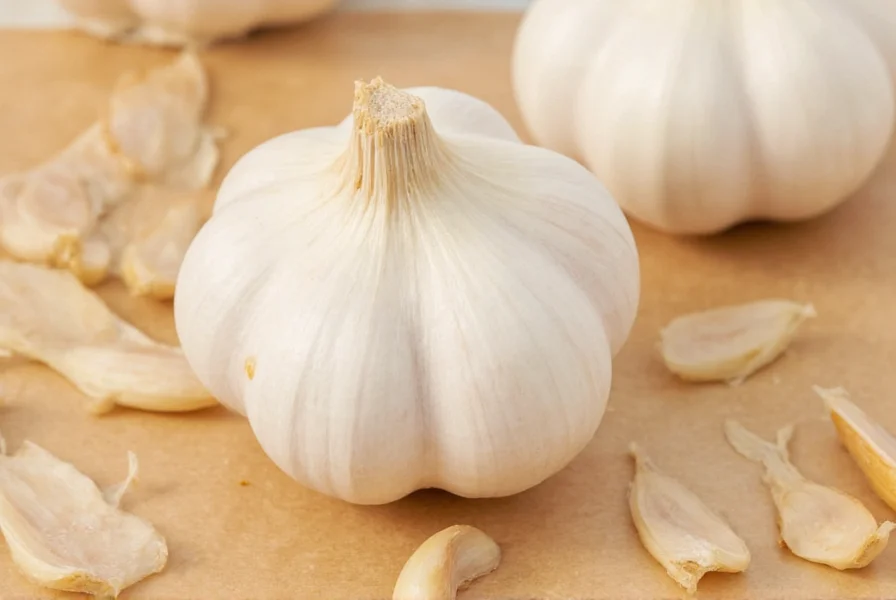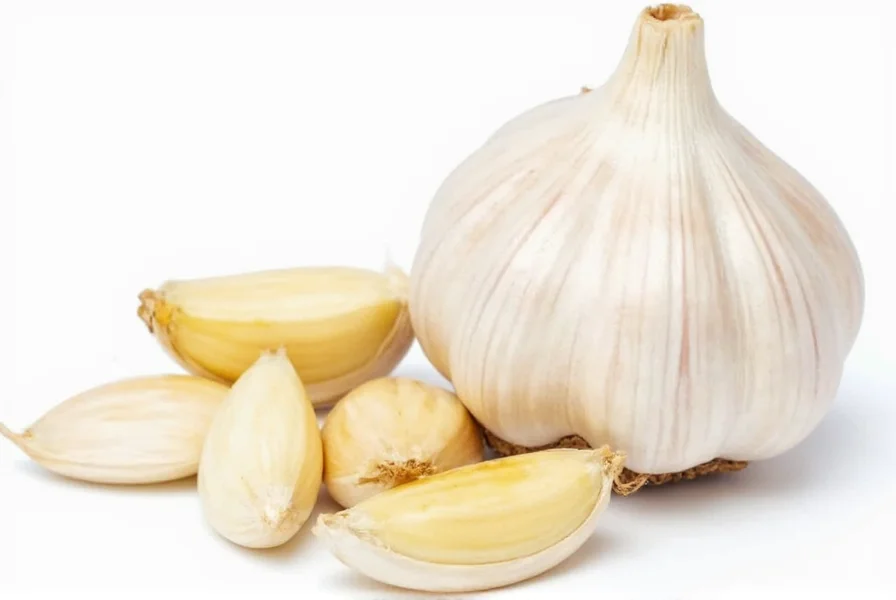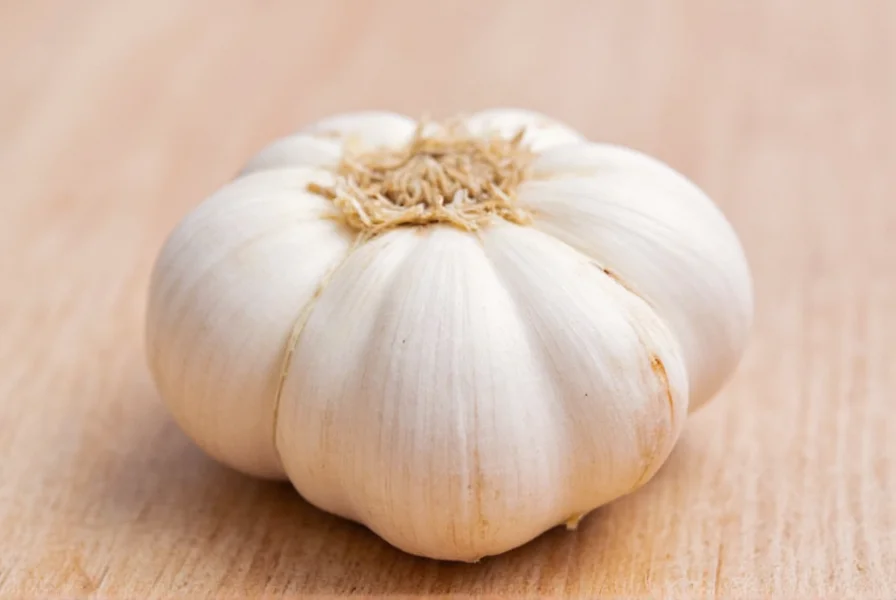Garlic has been used for medicinal purposes for over 5,000 years, with ancient civilizations recognizing its therapeutic properties. Modern science now validates many traditional uses, particularly when consuming garlic in its raw form. The key difference between raw and cooked garlic lies in allicin preservation—this sulfur-containing compound degrades rapidly with heat, making raw consumption essential for maximum health impact.
Why Raw Garlic Contains Unique Health-Promoting Compounds
When you crush or chop a raw garlic clove, an enzyme called alliinase converts alliin into allicin. This reaction only occurs in raw garlic and creates the compound responsible for most documented health benefits. Allicin remains stable for about 2.5 hours at room temperature before breaking down into other beneficial sulfur compounds.
| Compound | Raw Garlic Content | Cooked Garlic Content | Primary Health Benefit |
|---|---|---|---|
| Allicin | High (5-18 mg/clove) | Negligible | Antimicrobial, cardiovascular support |
| Ajoene | Moderate | Low | Blood thinning, anti-cancer properties |
| Diallyl sulfide | Low | High | Liver protection, antioxidant |
Cardiovascular Benefits Supported by Clinical Research
Multiple studies demonstrate raw garlic's positive impact on heart health. A comprehensive meta-analysis published in Experimental and Therapeutic Medicine found that raw garlic consumption reduced systolic blood pressure by 5-8 mmHg in hypertensive individuals. The allicin in raw garlic promotes vasodilation by increasing nitric oxide production, improving blood flow.
Research also shows raw garlic may improve cholesterol profiles. A 2022 clinical trial tracking participants who consumed one raw clove daily for 12 weeks noted an average 8% reduction in LDL cholesterol and 7% increase in HDL cholesterol. These effects appear strongest when garlic is consumed consistently over several months.

Immune System Enhancement and Antimicrobial Properties
Raw garlic's antimicrobial effects work against bacteria, viruses, and fungi. Laboratory studies show allicin disrupts bacterial enzyme systems, explaining why raw garlic exhibits antibacterial properties against pathogens like E. coli and Staphylococcus aureus. While not a replacement for antibiotics, regular raw garlic consumption may reduce the frequency and severity of common infections.
A randomized controlled trial following 146 participants through cold and flu season found those consuming raw garlic had 63% fewer colds and recovered 1.5 days faster than the control group. Researchers attribute this to garlic's ability to stimulate immune cell activity, particularly macrophages and lymphocytes.
Practical Consumption Guidelines and Potential Side Effects
For maximum benefit, nutrition experts recommend:
- Crush or chop garlic and wait 10 minutes before consumption to maximize allicin formation
- Consume 1-2 raw cloves daily, preferably with food to reduce gastrointestinal irritation
- Avoid swallowing whole cloves, as this prevents allicin formation
Potential side effects include bad breath (halitosis), heartburn, and digestive discomfort. People taking blood thinners should consult their physician before adding raw garlic to their diet due to potential interactions. Those with IBS may experience symptom exacerbation.
Raw vs. Cooked Garlic: Understanding the Nutritional Differences
Cooking significantly alters garlic's chemical profile. While cooked garlic still offers health benefits through other sulfur compounds, it lacks the potent allicin found in raw cloves. Roasting or boiling garlic destroys 60-100% of allicin depending on temperature and duration. However, cooked garlic develops different beneficial compounds like diallyl sulfide that offer liver protection and antioxidant effects.
For therapeutic purposes targeting specific conditions like hypertension, raw garlic provides superior results based on current evidence. For general health maintenance, both raw and cooked garlic contribute to a healthy diet.

Limitations of Current Research and Realistic Expectations
While promising, garlic research has limitations. Many studies use concentrated garlic extracts rather than whole cloves, and human trials often have small sample sizes. Garlic should complement—not replace—conventional medical treatments. It works best as part of a balanced diet rather than a standalone remedy.
The European Medicines Agency recognizes garlic preparations for mild blood pressure reduction and prevention of atherosclerosis, but emphasizes they're complementary to standard care. Don't expect dramatic results from occasional consumption—consistent daily intake over months yields the most documented benefits.
Frequently Asked Questions
How many raw garlic cloves should I eat per day for health benefits?
Research suggests 1-2 raw garlic cloves daily provides optimal benefits without excessive side effects. Consuming more than 3 cloves daily may cause digestive issues for some people. Allow 10 minutes after crushing before eating to maximize allicin formation.
Does raw garlic really lower blood pressure?
Clinical studies show raw garlic can reduce systolic blood pressure by 5-8 mmHg in people with hypertension. A meta-analysis of 8 studies found significant reductions after 1-3 months of daily consumption. Effects are modest compared to medication but meaningful as part of a comprehensive approach.
What's the best time to eat raw garlic for maximum benefits?
Consuming raw garlic on an empty stomach provides the most direct absorption, but may cause digestive discomfort. Many experts recommend eating it 30 minutes before your first meal. If you experience heartburn, consume with food—preferably containing healthy fats to improve compound absorption.
How long does it take to see benefits from eating raw garlic daily?
Most studies showing cardiovascular benefits required 8-12 weeks of consistent daily consumption. Immune system benefits may appear within 1-2 months during cold season. For cholesterol improvements, research indicates 12 weeks as the minimum duration for measurable changes.
Can I get the same benefits from garlic supplements instead of raw cloves?
Quality varies significantly among supplements. Aged garlic extract and enteric-coated allicin-release supplements can provide similar benefits to raw garlic, but many standard garlic pills contain minimal active compounds. Look for products specifying allicin potential or yield. Whole food consumption generally provides a broader spectrum of beneficial compounds.











 浙公网安备
33010002000092号
浙公网安备
33010002000092号 浙B2-20120091-4
浙B2-20120091-4